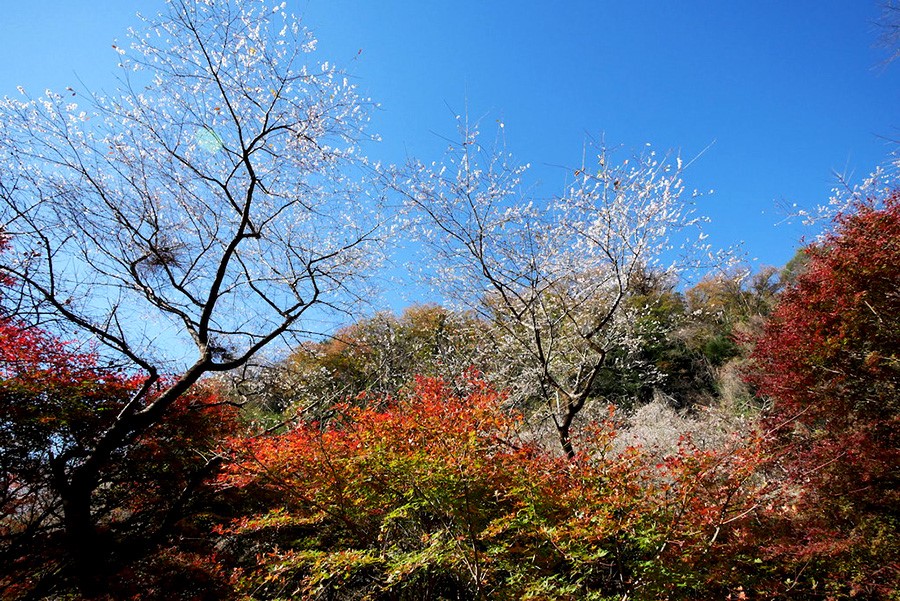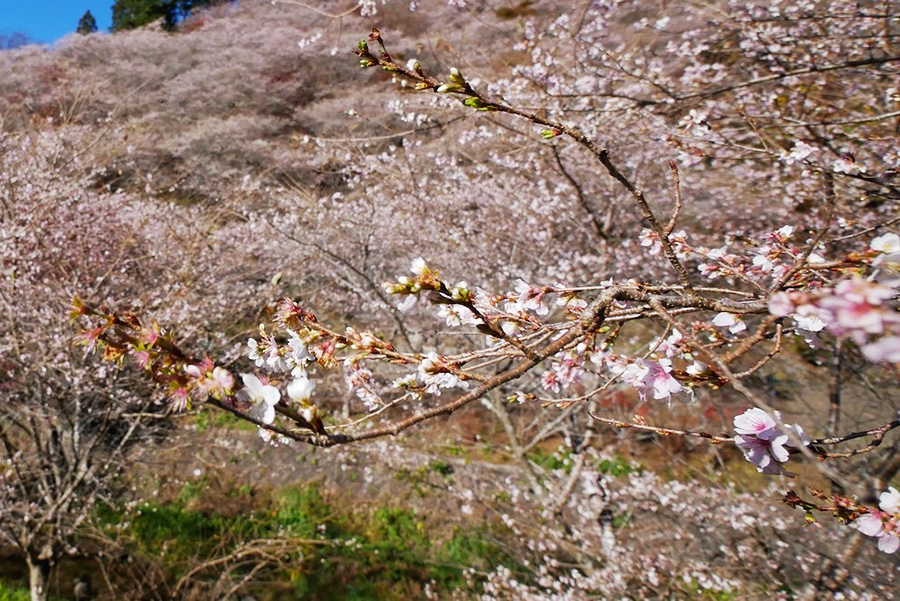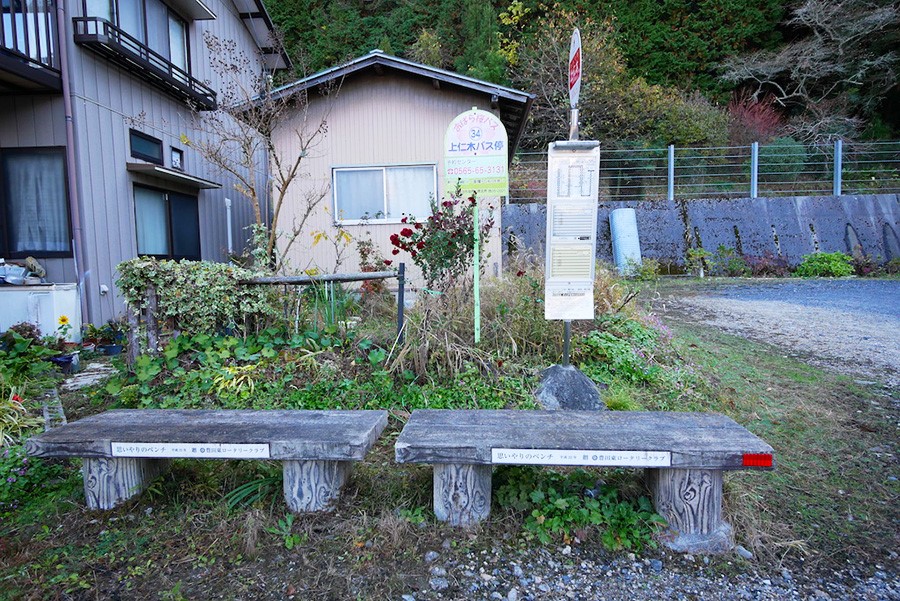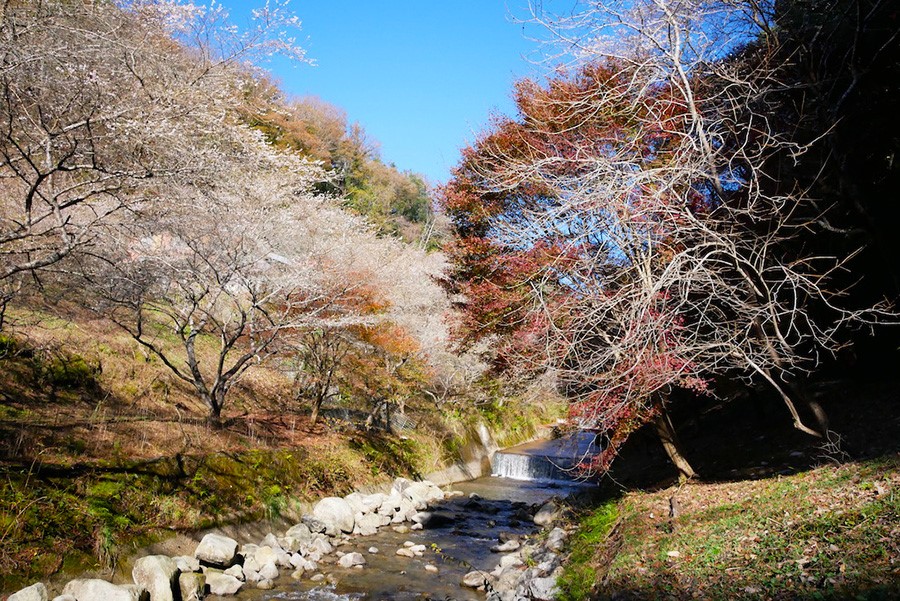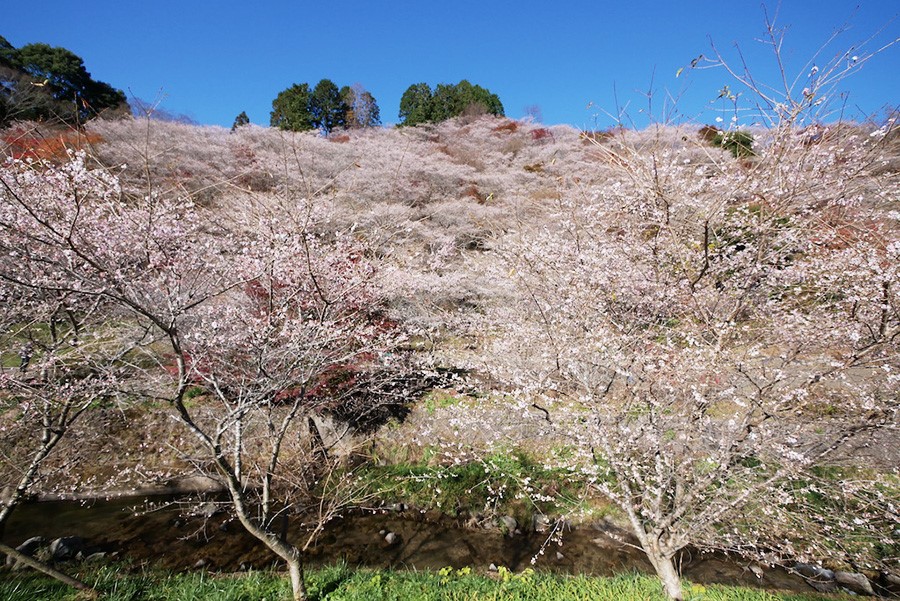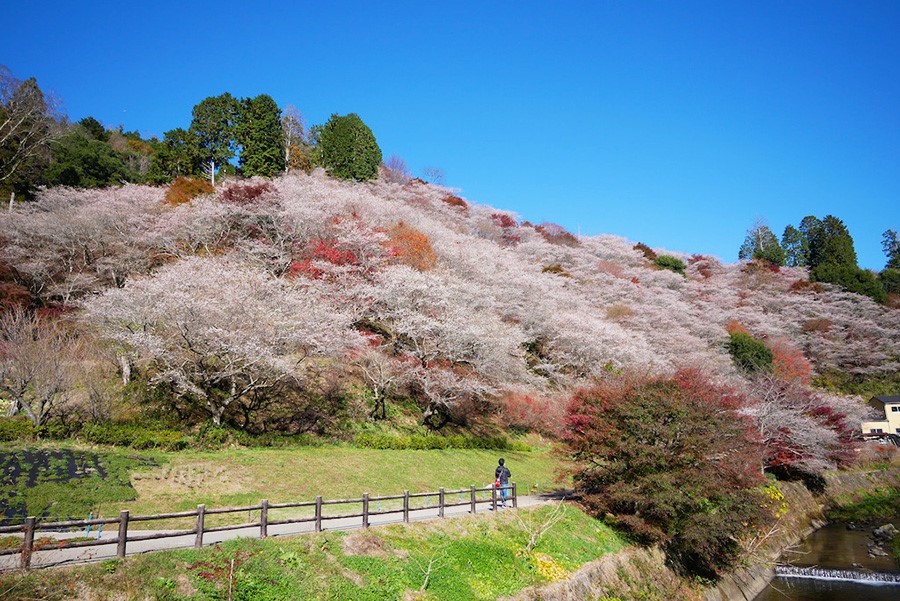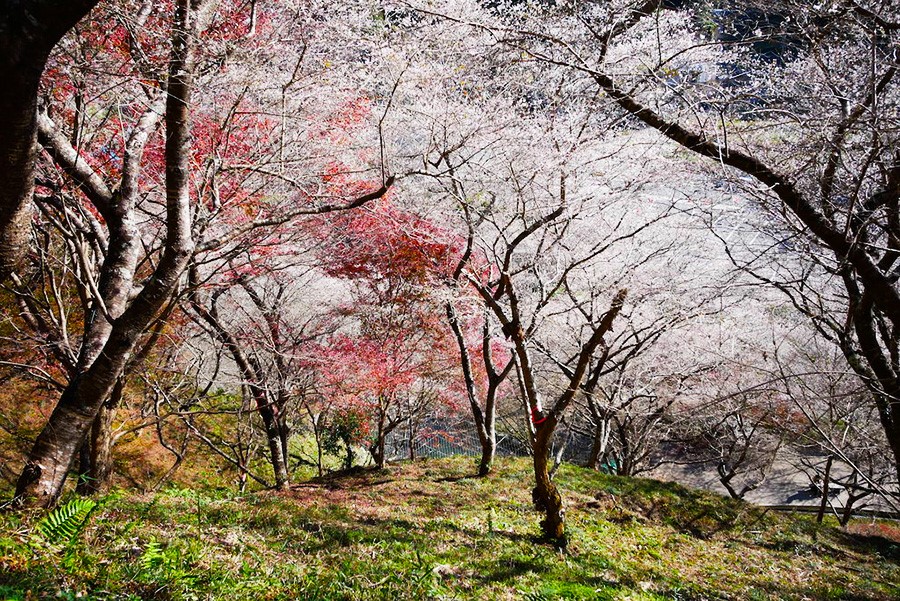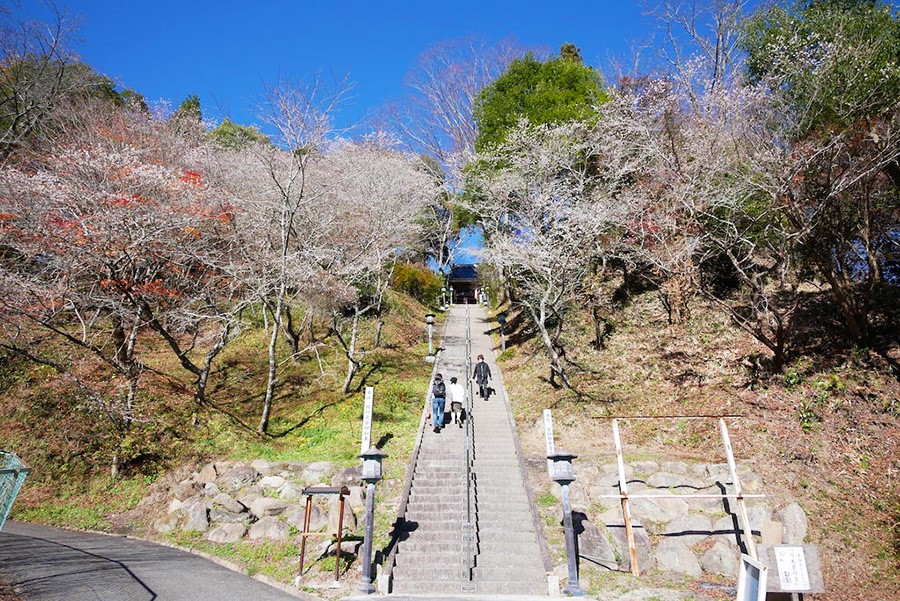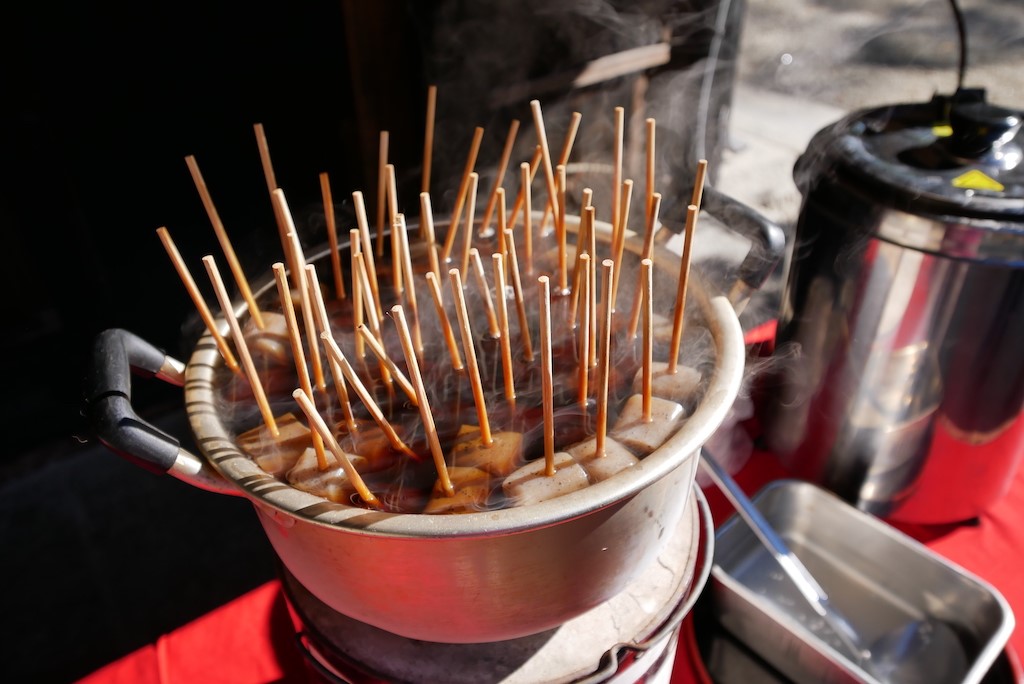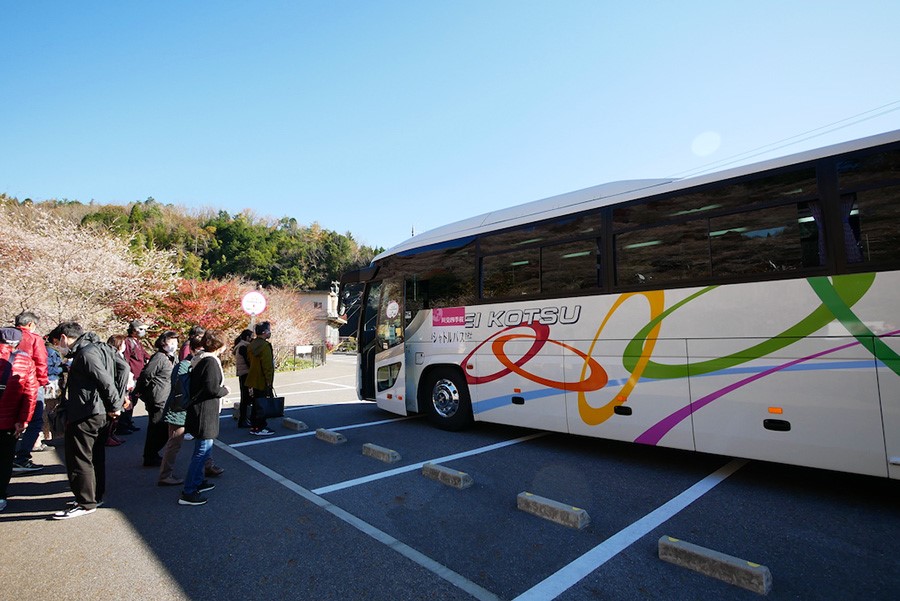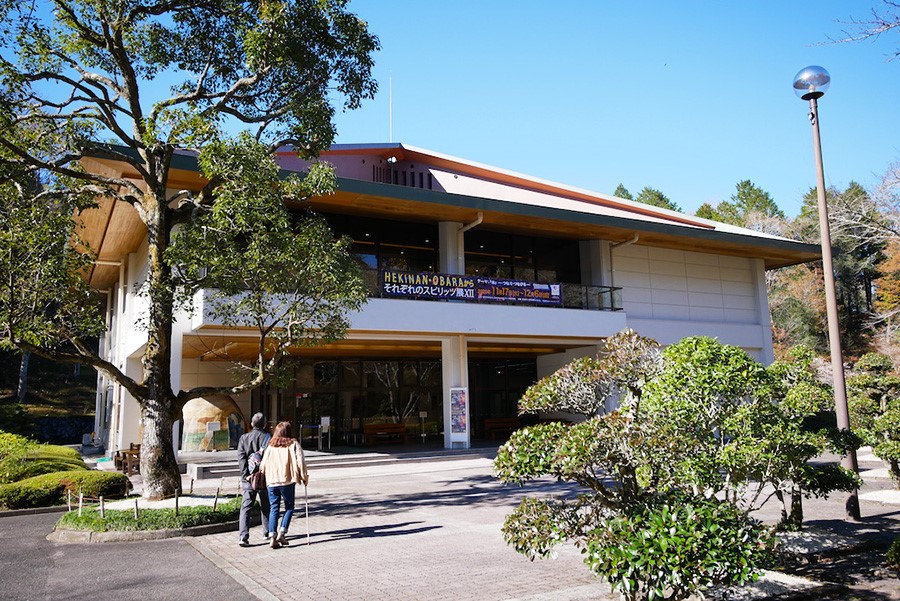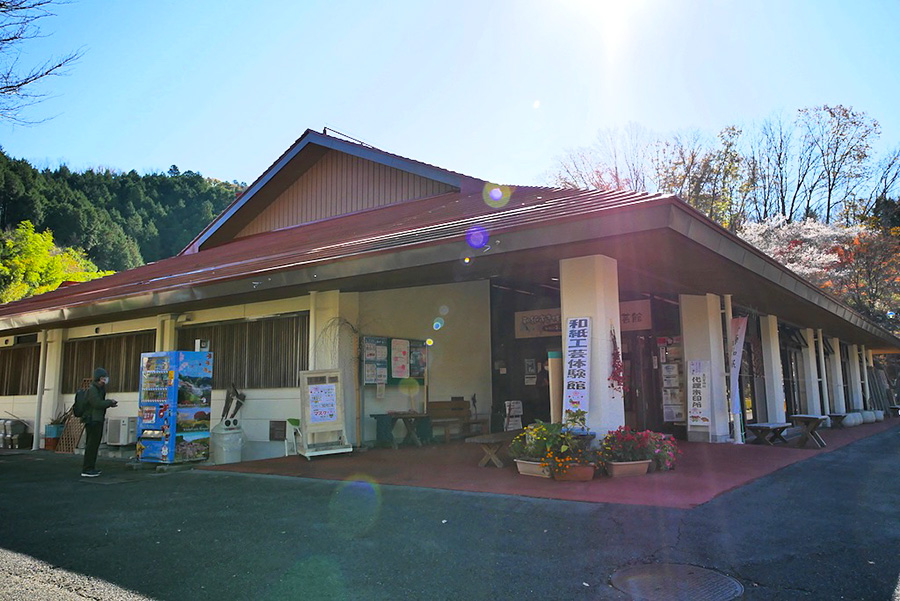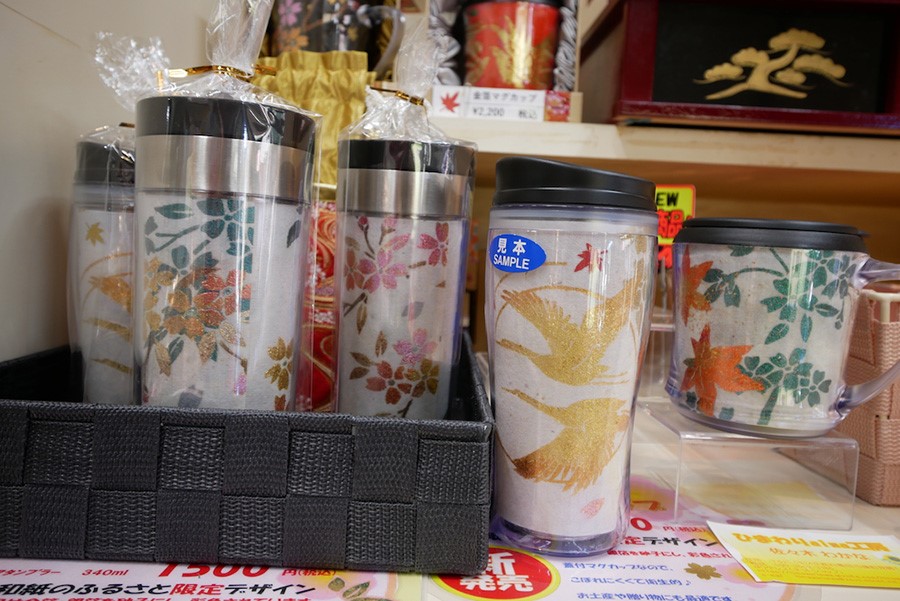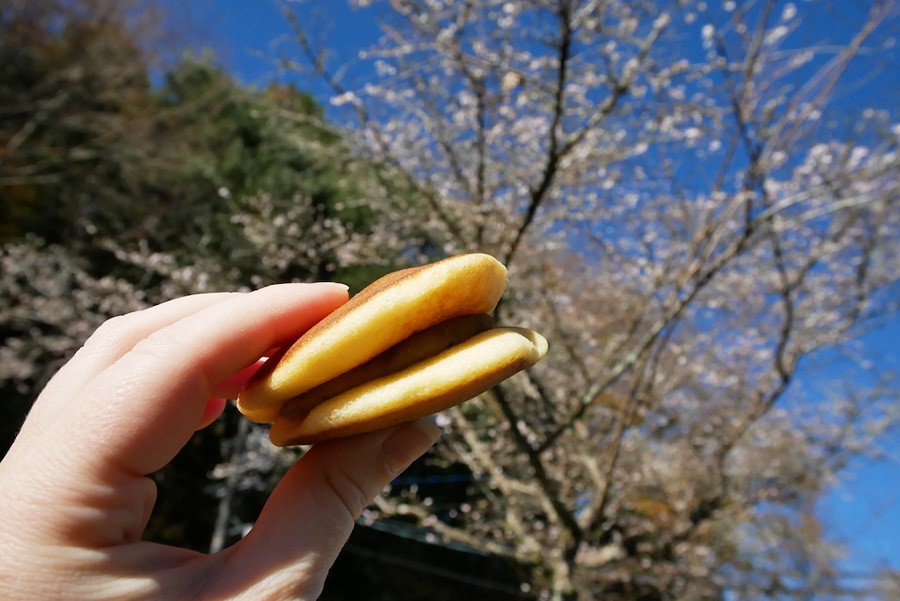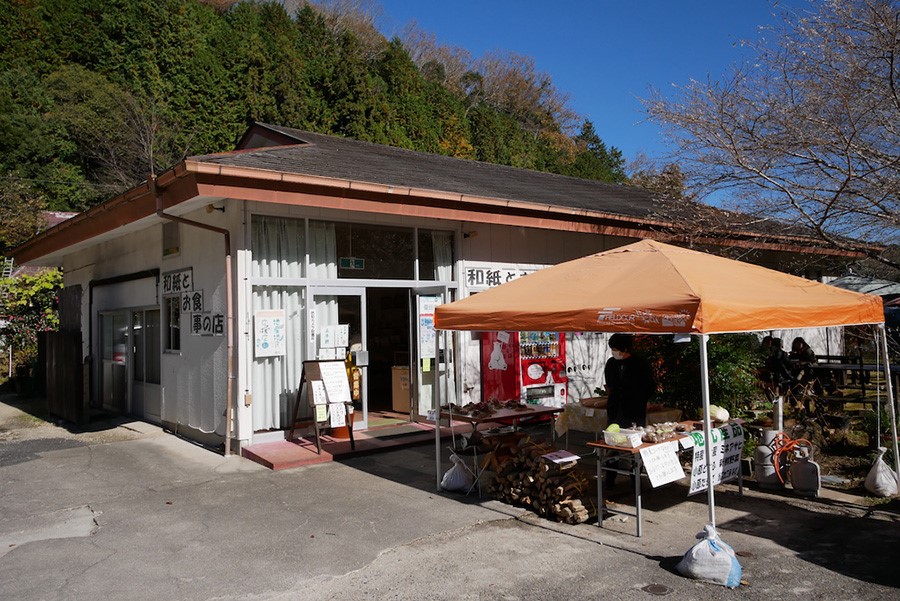Obara Shikizakura - Cherry blossoms and autumn leaves
|
|
〜*〜*〜*〜*〜*〜*〜*〜*〜*〜*〜*〜*〜*〜*〜*〜*〜*〜*〜
↓↓Trip information around Central Japan, Click here↓↓
Discover Central Japan ~みつけたび中部~
↓↓Useful Packages for traveling around Central Japan↓↓
-Shoryudo Bus Pass-
〜*〜*〜*〜*〜*〜*〜*〜*〜*〜*〜*〜*〜*〜*〜*〜*〜*〜*〜
Cherry blossom season or autumn leaves season?
Tourists planning a visit to Japan usually have to decide on one over the other.
But what if I told you, you can experience the best of both seasons during a visit to Obara District in Toyota City: cherry blossoms and autumn leaves at the same time.
|
|
Obara is home to a special kind of cherry tree species called Shikizakura (Four Season Cherry Blossoms). They bloom once in spring and again from November to December, right around the time when the Japanese maple trees change their color from green to vibrant red.
The best time to see this beautiful scenery is around the middle to late November each year.
|
|
I started my explorations of Obara on a sunny autumn day in late November. From Nagoya, it’s a two-hour ride via subway on the Tsurumai Line and the Toyota Oiden Bus to Kaminigi bus stop.
|
|
From there I walked a path leading along a creek lined with cherry trees in full blossom and a couple of Japanese maple trees showing off their green, yellow, and red-tinted leaves.
|
|
While the more than 10,000 Shikizakura trees can be found spread out over the whole Obara, the main spot to enjoy them is Senmi Shikizakura no Sato with 1200 cherry trees all planted on a low hill.
|
|
Just the view from the Kawami Parking Lot right in front of Senmi Shikizakura no Sato is breathtaking. But I do encourage everyone to cross the short bride over the Tashiro River to be closer to the trees.
|
|
If you have the stamina you can climb the 440-meter high hill to get up close to the cherry trees planted on the slopes.
|
|
Next to Senmi Sakurayama is Senmi Yakushiji Temple which you can visit by climbing the long flight of stone steps.
|
|
On the top you will be rewarded with a view and some freshly made Japanese Konjac Oden, a Japanese autumn or winter food made by stewing skewers of Konjac in a Miso soybean paste broth and Amazake, a fermented slightly sweet rice drink.
|
|
Once you have seen your fill, hop on the free shuttle bus or walk for 35 minutes to Washi no Furusato, one of the birthplaces of Japanese Washi paper.
Obara District has a climate very suitable for growing Kozo (Japanese Mulberry), the main material used in the production of Washi, and for this reason, the district has been producing Washi since around 1946. In fact, until the beginning of the 20th century, Obara’s main product was Washi used for Japanese umbrellas and Shoji, the paper sliding doors found in traditional houses. Nowadays Washi is used for framed paintings, Fusuma, Byoubu, fan, and table lamps.
|
|
At the Washi no Furusato, I visited the Washi Artwork Gallery filled with incredible works of art all made from Washi paper. The unique properties of Washi allow for incredibly textured artworks with a three dimensional quality to them.
|
|
Up the hill, you will find the Art and Craft Center where you have the opportunity to make and decorate your own Washi paper for between 1000 and 1500 yen.
Classes are held regularly throughout the day and take between 30 minutes and 2 hours, plus an additional 50 minutes to 2 hours for drying.
|
|
To commemorate your trip to Obara, you can buy some souvenirs at the Art and Crafts Center. Different items such as tumblers, fans, or bookmarks made of Washi are of course available.
|
|
As are items such as clear file folders or postcards depicting the Shikizakura.
|
|
If you are looking for an edible souvenir (or a snack for right away) I highly recommend buying a Dorayaki at the Art and Crafts Center. Basically, two pancakes with sweet bean paste spread in between. The Dorayaki sold here are made with cherry tree leaves in the paste. And while that might be hard to imagine it creates a unique and pleasant aroma I can only describe as tasting like spring.
|
|
There aren’t too many restaurants and food options available. At the Washi no Sato you will find the Washi and Food Shop Kami no Hana where you can have some Soba buckwheat noodles or Goheimochi (grilled rice cake on a skewer with a sweet walnut Miso paste).
While there are many more spots around Obara District to enjoy the Shikizakura such as Maebora Shikizakura the oldest cherry tree and the Ichiba Castle Ruins. I had to say goodbye to Obara and the beautiful cherry blossoms.
〜*〜*〜*〜*〜*〜*〜*〜*〜*〜*〜*〜*〜*〜*〜*〜*〜*〜*〜
↓↓Trip information around Central Japan, Click here↓↓
Discover Central Japan ~みつけたび中部~
↓↓Useful Packages for traveling around Central Japan↓↓
-Shoryudo Bus Pass-
〜*〜*〜*〜*〜*〜*〜*〜*〜*〜*〜*〜*〜*〜*〜*〜*〜*〜*〜
- 441-1 Kamihira, Obara-cho, Toyota City, Aichi Prefecture
- 9:00~16:00 (Mon-Fri)
- 0565-65-3808
- http://www.kankou-obara.toyota.aichi.jp/english/




